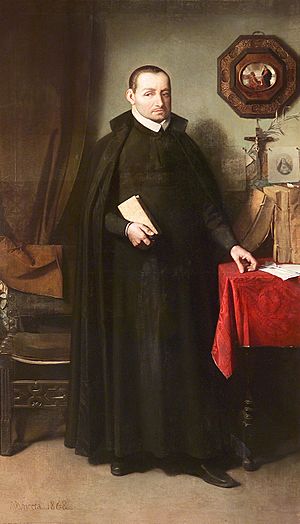Bartolomé Leonardo de Argensola facts for kids
Bartolomé Leonardo de Argensola (born August 1562 – died February 4, 1631) was a famous Spanish poet and historian. He lived a long time ago, in the 16th and 17th centuries.
About Bartolomé Leonardo de Argensola
Bartolomé Leonardo de Argensola was born in a town called Barbastro in August 1562. He studied at a place called Huesca. Later, he became a priest in 1588.
In 1610, he started working for the Count de Lemos, who was like a governor (called a viceroy) in Naples. Then, in 1613, he took over from his brother, Lupercio, as the official historian for the region of Aragon. He passed away in Saragossa on February 4, 1631.
What He Wrote
Bartolomé wrote several important books. One of his main prose works was Conquista de las Islas Molucas, which means "Conquest of the Moluccas Islands." This book was published in 1609. He also wrote an addition to another historian's work, Zurita's Anales de Aragón, which came out in 1630.
His poems, published in 1634, were known for being very well-written and clever, much like his older brother's poems. Sadly, some of his other writings are now lost. These included his thoughts on events happening at the time and a book called Alteraciones populares, which was about a rebellion in Saragossa in 1591.
In his book Conquista de las Islas Molucas, Bartolomé wrote about something interesting. He mentioned that in New Guinea, the Spanish people called white children born to black people Albiños. This is thought to be the very first time this word was used in writing!
See also
 In Spanish: Bartolomé Leonardo de Argensola para niños
In Spanish: Bartolomé Leonardo de Argensola para niños


